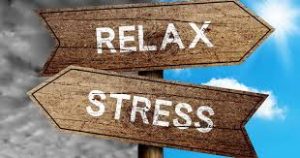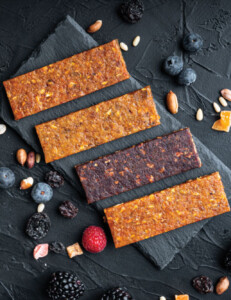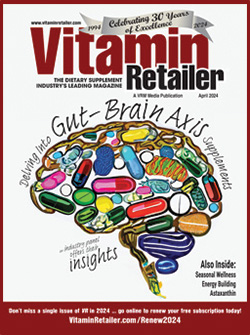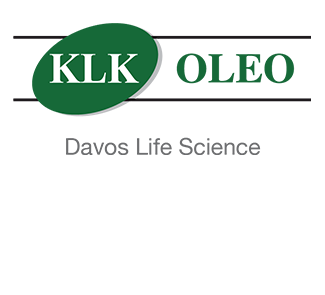When we think about energy, we might envision running a marathon or dancing the tango. And yes, those activities certainly need energy. But we also need a consistent source of energy to do the humdrum tasks in our lives (hello, my old nemesis: laundry), and to care for ourselves. When we start to run out of energy, usually we stop our outside energetic activities first. We cut down or give up on sports, nights out with friends or long hikes in the wilderness. Next, we cut down on our energy expenditure at home and work and become more sedentary. And if our energy drops lower still, we may find work impossible and that relationships have become unstable. So much depends on our energy!
Fatigue is a condition that impacts millions of people per year. One study found that 38 percent of the workforce in the United States reports fatigue. Many health conditions are also associated with increased risk of fatigue; at least 50 percent of stroke survivors report fatigue, and more than 60 percent of patients with advanced cancer experience fatigue.
There are other things that damage our energy, from chronic illness, to environmental stressors, to emotional stressors, to the aging process itself. If people have serious issues with ongoing lack of energy, they may be diagnosed with chronic fatigue (CF) and if in pain, also fibromyalgia syndrome (CF/FMS).
Conventional medications for fatigue include stimulants and off-label use of medications like antidepressants. But there are natural ways to help improve energy and to fight back against energy drains. In this article, we are going to focus on a few of the best studied herbs that are in a class of botanicals called adaptogens.
Red Ginseng
Ginseng is perhaps one of the most widely used and studied herbal remedies for fatigue. Historically, ginseng has been utilized in China for well over 4,000 years. There is some confusion regarding plants that are called ginseng. There are only two species of ginseng, Panax ginseng from Asia, and Panax quinquefolia from North America. Though related, they are not the same plants, and Asian ginseng has more clinical research and an impact on energy.
Asian ginseng (Panax ginseng) contains compounds called ginsenosides that can influence the central nervous system and help modulate the stress response. Ginseng can also influence biomarkers associated with fatigue, decrease the production of inflammatory substances in the body, and help manage energy production.
Ginseng becomes red ginseng through a steaming process that helps release its medicinal compounds. That is why the literature sometimes mentions red ginseng. Red ginseng has been found to help improve fatigue and/or quality of life in healthy people, and also people with chronic fatigue syndrome, cancer and multiple sclerosis.
In a 2021 study, a special form of ginseng (HRG80) was found to be effective for people with post-viral fatigue, chronic fatigue and fibromyalgia. There were 188 participants who took either HRG80 ginseng in either capsule or chewable tablet form for one month. At the end of the study, 60.1 percent of participants experienced significant improvements, and an additional 13.3 percent felt much better. The people with significant improvements reported an average increase of 67 percent in energy, 44 percent sense of well-being, 48 percent in mental clarity, 46 percent in sleep and 72 percent in stamina.
Ashwagandha
Ashwagandha is excellent for improving mood, sleep and stamina—all important factors when it comes to daily energy. A 2021 meta-analysis of 12 studies found that ashwagandha was superior to placebo in improving physical performance in otherwise healthy men and women. Ashwagandha was shown to improve endurance, reduce stress, improve quality of life, increase strength and activity level.
Compounds within ashwagandha, called withanolides, appear to be responsible for many of the beneficial properties, including improving energy and stamina. A study done in 2019 explored ashwagandha’s effects in men and women for 60 days. The ashwagandha used contained more than 35 percent withanolides (compared to the 5 percent withanolides or less in standard ashwagandha) and was shown to reduce anxiety levels by more than 40 percent, reduce cortisol by 23.3 percent, and showed a trend for increasing testosterone in the male participants.
With fatigue being highly correlated with sleep parameters, ashwagandha was shown to induce sleep and improve sleep quality.
Rhodiola
Rhodiola has been shown in scientific research to influence genes involved in energy production, cortisol release, melatonin, immune function, enzymes and many others that directly impact the body processes that impact energy.
Rhodiola affects physical energy and can increase metabolic energy. Research has shown that rhodiola and its key compound, salidroside, can increase the production of cellular energy, called adenosine triphosphate (ATP). This means that rhodiola may be a treatment option for people with type 2 diabetes and atherosclerosis.
In a 2017 clinical study, rhodiola was found to have significant anti-fatigue effects. Participants took rhodiola twice per day for eight weeks. After the first week, participants noticed improvements in general fatigue (decreased by over 28 percent), physical fatigue, mental fatigue, reduced activity and reduced motivation. The improvements continued throughout the eight weeks of the study.
In a study looking specifically at menopause, a common cause of fatigue in women in their 40s and 50s, rhodiola combined with black cohosh was superior to black cohosh alone for improving quality of life. Significant reductions occurred in the rating scales, which included parameters like lack of drive, physical and mental exhaustion, and sleep problems. There was a 71.2 percent reduction in the Kupperman Menopausal Index (KMI) and 67.7 percent reduction in the Menopausal Rating Score (MRS) for the participants in the rhodiola and black cohosh group.
Eleuthero
Eleuthero is a great herb that has been the subject of mistaken identity. It used to be called “Siberian Ginseng” when it is not related to true ginseng. It was likely given this nickname because it is able to increase energy and stamina, but it is important to know the difference.
Eleuthero was used in a clinical trial involving people aged 65 years or older for eight weeks. Participants were diagnosed with hypertension and on the prescription medication, digitalis, plus received 300 mg per day of eleuthero or placebo. After four weeks, improvements were noted in social functioning, although the improvements did not continue throughout the entire eight-week study. No significant negative effects were noted on blood pressure or digitalis efficacy.
A study involving participants with chronic fatigue were given eleuthero for two months. Significant reductions in fatigue severity were noted, particularly in subjects with less severe fatigue. Improvements, although not statistically significant, were also observed in participants with fatigue for greater than or equal to five years.
Together or Separate?
If a person is really struggling with fatigue, it may be tempting to take all these wonderful herbs at their full dosage strength at once. I find it better for people to select one, such as red ginseng, and take that for a month or so. Then one can add others over the next several weeks. It is useful to know which herb is providing which benefits, which is hard to discern if you start all simultaneously.
Also note that energy needs nutrients, too, so make sure you are using a high-quality vitamin and mineral formula to establish your healthy foundation. VR
References:
Al Maqbali M, et al. Prevalence of Fatigue in Patients with Cancer: A Systematic Review and Meta-Analysis. J Pain Symptom Manage. 2021 Jan;61(1):167-189.
Bai X-L, et al. Rhodiola and Salidroside in the Treatment of Metabolic Disorders. Mini Rev Med Chem. 2019;19(19):1611-1626.
Bonilla DA, et al. Effects of Ashwagandha (Withania somnifera) on Physical Performance: Systematic Review and Bayesian Meta-Analysis. J Funct Morphol Kinesiol. 2021 Feb 11;6(1):20.
Cicero AFG, et al. Effects of Siberian Ginseng (Eleutherococcus senticosus maxim.) on Elderly Quality of Life: A Randomized Clinical Trial. Arch Gerontol Geriatri Suppl. 2004;(9):69-73.
Cumming TB, et al. The Prevalence of Fatigue After Stroke: A Systematic Review and Meta-Analysis. Int J Stroke. 2016 Dec;11(9):968-977.
Hartz AJ, et al. Randomized Controlled Trial of Siberian Ginseng for Chronic Fatigue. Psychol Med. 2004 Jan;34(1):51-61.
Junghaenel DU, et al. Demographic Correlates of Fatigue in the US General Population: Results from the Patient-Reported Outcomes Measurement Information System (PROMIS) Initiatie. J Psychosom Res. 2011 Sep;71(3):117-123.
Lekomtseva Y, Zhukova I, and Wacker A. Rhodiola rosea in Subjects with Prolonged or Chronic Fatigue Symptoms: Results of an Open-Label Clinical Trial. Complement Med Res. 2017;24(1):46-52.
Lopresti AL, et al. An investigation into the stress-relieving and pharmacological actions of an ashwagandha (Withania somnifera) extract. Medicine. 2019;98:e17186.
Lu G, et al. Recent Advances in Panax ginseng C.A. Meyer as a Herb for Anti-Fatigue: An Effects and Mechanisms Review. Foods. 2021 May;10(5):1030. Panossian A, Seo EJ, Efferth T. Novel molecular mechanisms for the adaptogenic effects of herbal extracts on isolated brain cells using system biology. Phytomedicine. 17 Sep 2018;50:257-284.
Pkhaladze L, et al. Actaea racemose L. Is More Effective in Combination with Rhodiola rosea L. for Relief of Menopausal Symptoms: A Randomized, Double-Blind, Placebo-Controlled Study. Pharmaceuticals (Basel). 2020 May 21;13(5):102.
Teitelbaum J and Goudie S. An Open-Label, Pilot Trial of HRG80™ Red Ginseng in Chronic Fatigue Syndrome, Fibromyalgia, and Post-Viral Fatigue. Pharmaceuticals (Basel). 2022 Jan;15(1):43.
Cheryl Myers is an integrative health nurse, author, and an expert on natural medicine. She is a nationally recognized speaker who has been interviewed by the New York Times, Wall Street Journal and Prevention magazine. Her many articles have been published in such diverse journals as Aesthetic Surgery Journal and Nutrition in Complementary Care, and her research on botanicals has been presented at the American College of Obstetrics and Gynecology and the North American Menopause Society. Myers is the head of scientific affairs and education for EuroPharma, Inc.













